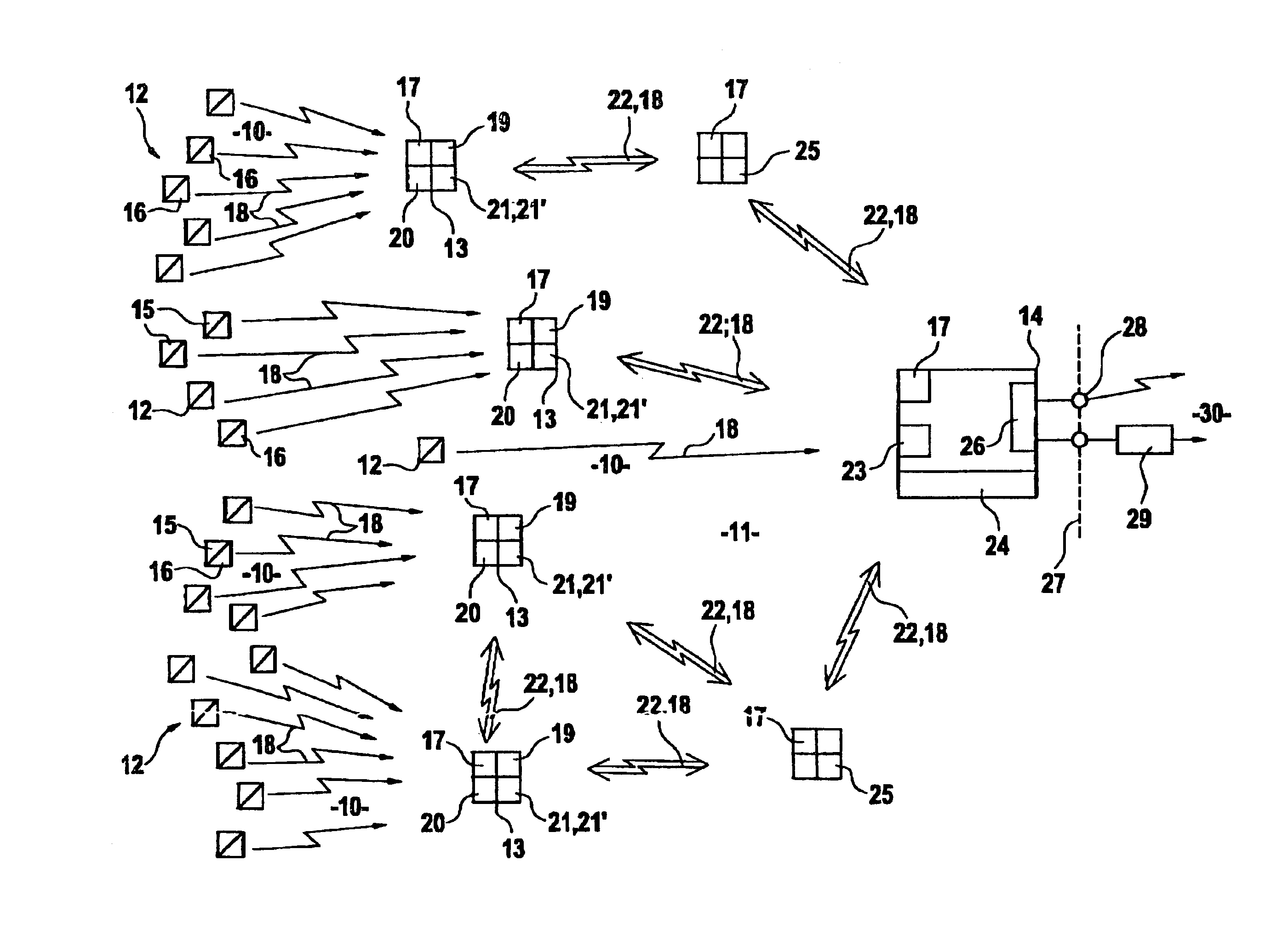Data communication radio network
a radio network and data technology, applied in the field of radio networks, can solve the problems of prolonging the battery-operated operating period of data collectors, energy consumption, etc., and achieve the effect of increasing the degree of system reliability
- Summary
- Abstract
- Description
- Claims
- Application Information
AI Technical Summary
Benefits of technology
Problems solved by technology
Method used
Image
Examples
Embodiment Construction
[0017]The radio network 11 considered in the context of the present invention extends from a relatively large number of terminal devices 12 (for example in residences in a multiple-unit dwelling) by way of primary radio paths or sections 10 to a plurality of data collectors 13 (for example in various storeys of the stairwell of the housing unit) and by way thereof to typically only one master data collector 14 which also implements central coordinating functions (for example in the central equipment room or at the ground floor entry of the building).
[0018]Each terminal device 12 has a data acquisition unit 15 with an identification unit for individualisation thereof and a radio transmission unit 16, which in terms of equipment technology can both be integrated in apparatus terms or which can simply be assembled with each other. The acquisition unit 15 in the terminal device 12 typically involves measuring or recording devices for consumption-dependent quantitative data such as that ...
PUM
 Login to View More
Login to View More Abstract
Description
Claims
Application Information
 Login to View More
Login to View More - R&D
- Intellectual Property
- Life Sciences
- Materials
- Tech Scout
- Unparalleled Data Quality
- Higher Quality Content
- 60% Fewer Hallucinations
Browse by: Latest US Patents, China's latest patents, Technical Efficacy Thesaurus, Application Domain, Technology Topic, Popular Technical Reports.
© 2025 PatSnap. All rights reserved.Legal|Privacy policy|Modern Slavery Act Transparency Statement|Sitemap|About US| Contact US: help@patsnap.com


